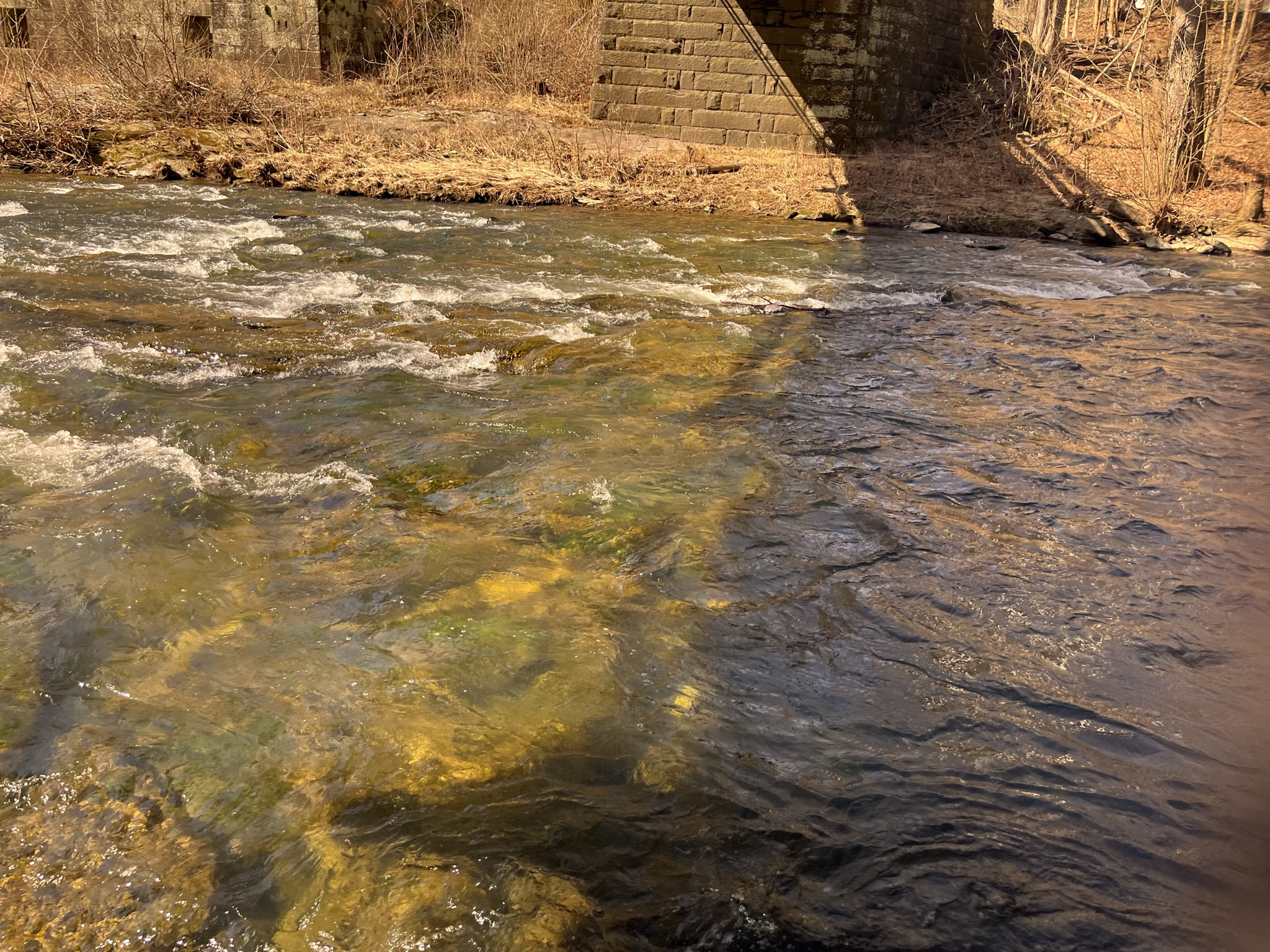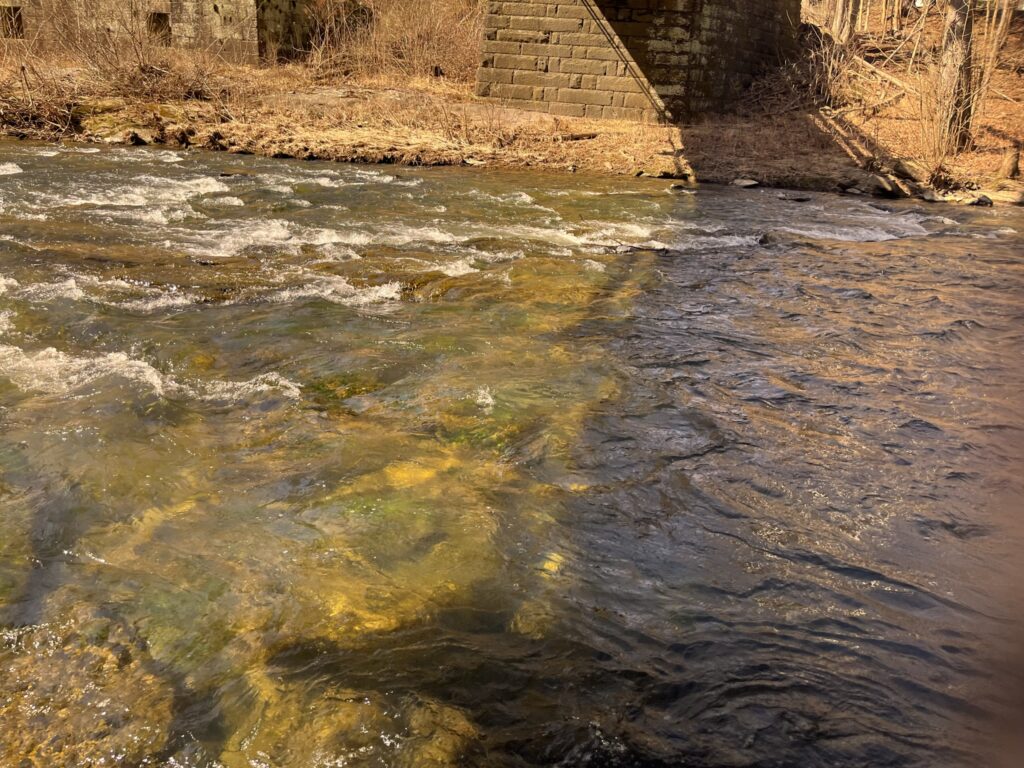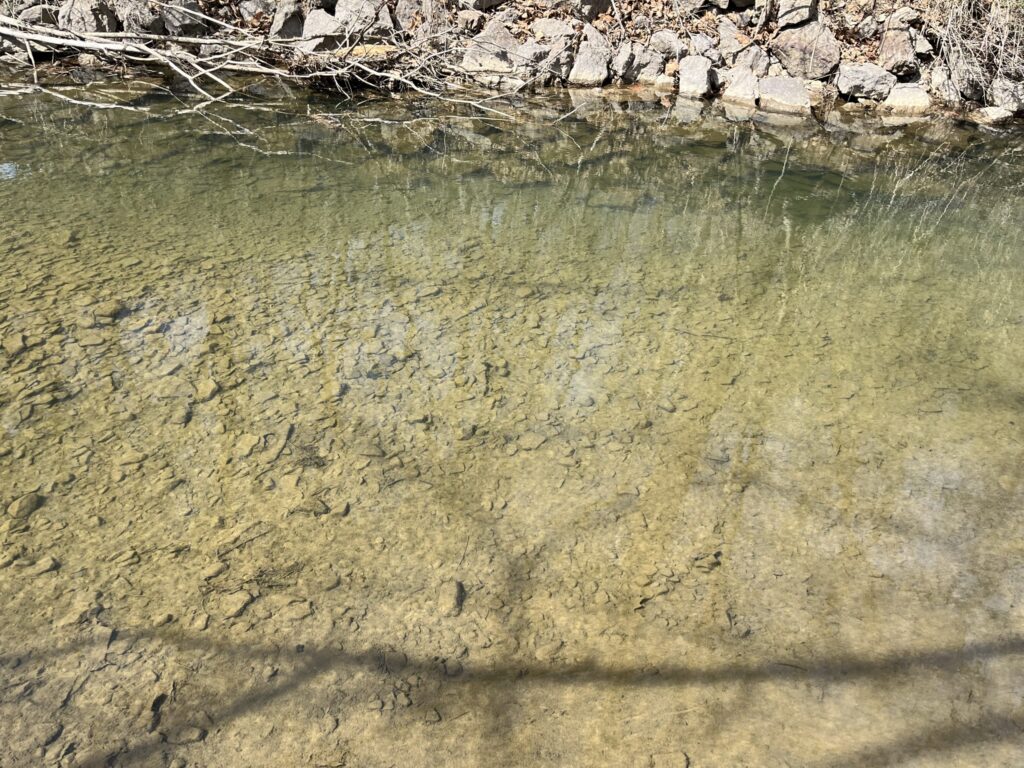
East Palestine Follow-Up Sampling

On Tuesday, March 21, 2023, Justin C. Johnston, MS, MBA, President of Big Pine Consultants LLC, completed a second, independent, self-funded, sampling event related to the East Palestine Train Derailment. The Norfolk Southern train containing several hazardous materials derailed in East Palestine on February 3, 2023. On February 6, 2023, responders from Norfolk Southern, Ohio Environmental Protection Agency (OEPA) and Pennsylvania Department of Environmental Protection agreed to conduct a “controlled burn” of five cars containing vinyl chloride. The burn started at 4:15pm on February 6, 2023. As discussed in previous News Blog posts on the topic, Big Pine Consultants LLC completed water quality sampling of nine stream sites “downstream” and “downwind” of the derailment in East Palestine, Ohio on February 17, 2023. We received our laboratory analytical results on March 3, 2023. We published a report on March 8, 2023.
The results of downstream sampling had shown the presence of Oil Range Organics (ORO). OEPA samples identified low levels of Butyl acrylate and Ethylhexyl acrylate. These are likely what are causing “flashes” of sheen on the surface of Sulphur Run and Leslie Run. Notably, with the exception of what we anticipate is an anomalous detection of acetone, our results showed no detectable levels of Volatile Organic Compounds (VOCs) including vinyl chloride in downstream samples. We take this result to indicate that aeration and cleanup at the spill site is effective at removing VOCs. We would remind people that aeration treatment is likely expelling the VOCs into the air and they could be in higher concentrations in the air near the aeration sites. We therefore recommend keeping a safe distance from aerators without proper personal protective equipment.
The results of our initial sampling indicated low, but detectable levels of several Semi-Volatile Organic Compounds (SVOCs), specifically a class of compounds called Polycyclic Aromatic Hydrocarbons (PAHs) that are formed through incomplete combustion of organic compounds like the controlled burn. Although we cannot directly attribute the presence of these compounds to the burn event, Big Pine is not aware of another potential source including in the small watershed of Coalbank Run, the closest “downwind” site which would have limited potential alternative sources. “Downstream” sites that had most of their watershed “upwind” of the burn did not contain these PAH contaminants either (Big Pine 05, Big Pine 06, and Big Pine 08). This evidence supports the PAHs being from the controlled burn, but we cannot determine that for certain. Several of the detected PAHs are probable carcinogens. According to the National Institute of Safety and Health (NIOSH) there is no safe level of exposure to these compounds. As a result, Big Pine is of the opinion that their presence in a detectable level is a potential long-term hazard to fish and wildlife and potentially people, depending on where they are carried over time. Big Pine recommended continued and expanded monitoring of streams surrounding the derailment site. The area of sampling should extend to areas potentially effected by the plume contaminants returning to the ground surface. The sampling should also be conducted using labs with lower minimum detect levels than currently being used by OEPA. PADEP should expedite and release their final surface water sampling results and expand surface water sampling well beyond their currently described 1 mile radius of East Palestine. The plume constituents likely were carried many miles during the burn, so the current sampling design is wholly inadequate.
Other sampling has described Dioxins as another carcinogen of concern as a result of the controlled burn. Big Pine did not initially sample for Dioxins because the analytical laboratory costs are very expensive and the time required to get test results is 10-12 or more weeks. We limited our initial sampling to VOCs, Gasoline Range Organics (GRO), SVOCs, and DRO to save on costs and get our results in a timely fashion.
On March 21, 2023, Big Pine returned to three sampling sites for follow-up sampling. The three sites were Big Pine 02 – South Branch Brady Run near Park Rd, Brady’s Park, Big Pine 04 – Coalbank Run at the intersection of Cannelton Rd and Valley Rd, and Big Pine 07 – North Fork Little Beaver Creek at Main Street in Fredericktown, Ohio. All three of these sites had detectable amounts of PAHs, some exceeding Report Limits. Big Pine therefore sampled all three sites to get follow-up results about 1 month from the initial sampling effort. In addition, Big Pine collected VOC, GRO and a Dioxin sample at Big Pine 04 – Coalbank Run. Big Pine would have expanded Dioxin sampling to more sites, however the analytical laboratory expense is much higher than for the other constituents making it cost prohibitive.

On the day of sampling, air temperatures were in the mid-50s°F, sky was partly cloudy, and there had been no rain in the past 24-hours. Typically, we would target sampling after a rain event of at least 0.25-inches in order to capture run-off. For logistical reasons, we were not able to wait for a rain event on this sampling event. This may have some impact on our results as run-off carrying incomplete combustion products over the land surface would not have occurred. Most of the water in the streams at the time of sampling would be from groundwater sources alone. If the samples show no-detectable levels of contaminants, continued monitoring would still be required in the future.

Big Pine anticipates having results of SVOC and Diesel Range Organics (DRO) samples from the three sites the week of April 4, 2023. Dioxin results will be delayed to mid-late June, 2023.
For more information on our sampling sites and initial sampling effort, please check out our story map.